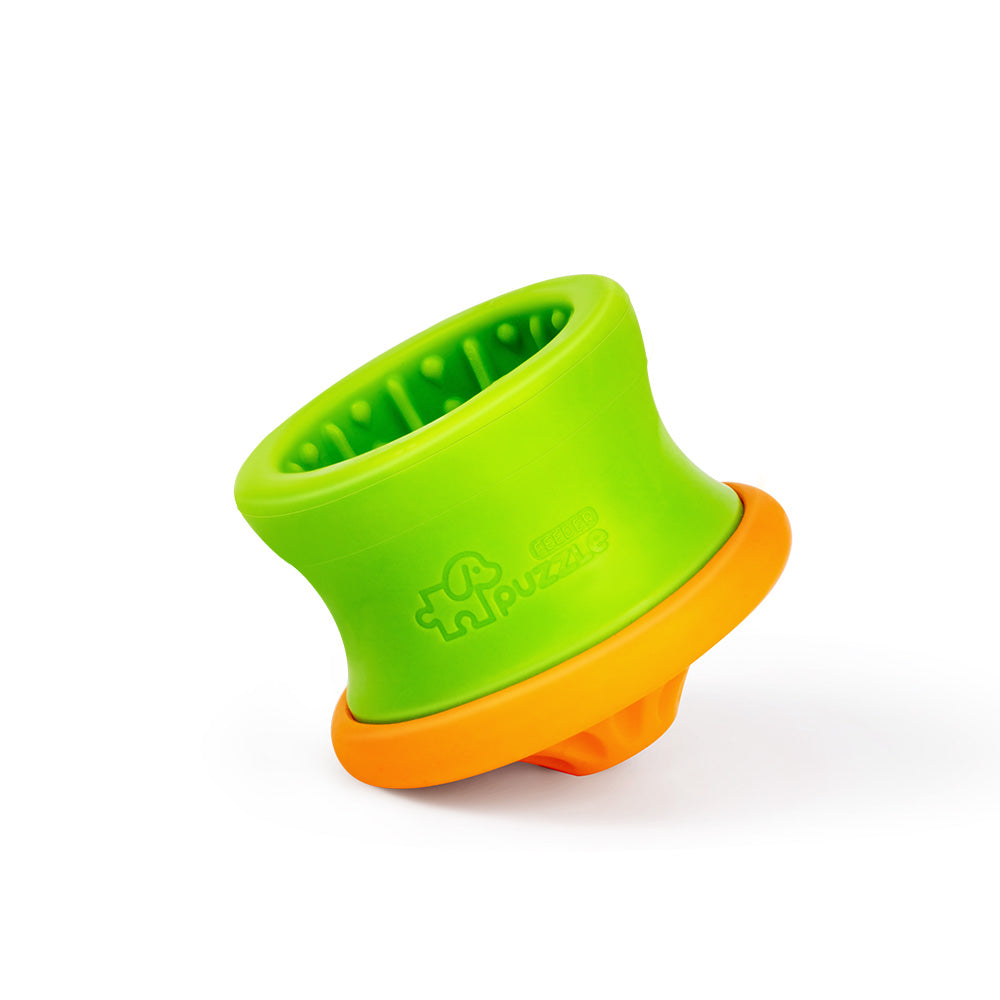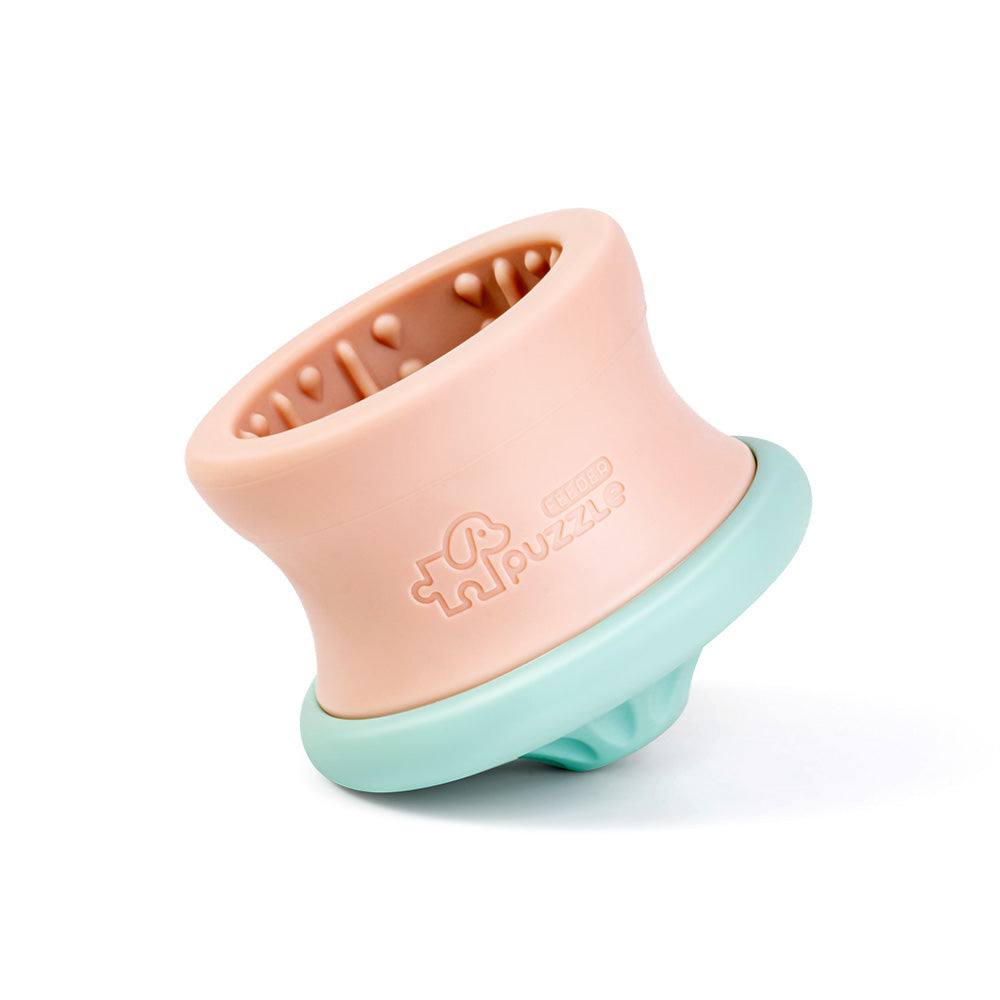Dogs bark—it’s just how they communicate. But when your dog’s barking starts to get out of hand, it can disrupt your peace and even cause tension with your neighbors. The good news? You can take steps to reduce your dog’s barking with a few simple, consistent strategies.

In this guide, we’ll explore why dogs bark and offer effective tips to manage excessive barking. Plus, we’ll show you how using tools like puzzle feeders can help keep your dog mentally engaged, making barking less of an issue.
Why Do Dogs Bark?
Dogs bark for different reasons. Understanding why your dog is barking is the first step to reducing it. Here are some common causes:
- Territorial Barking: Your dog is protecting their space from what they think are intruders.
- Alert Barking: Dogs bark to let you know something’s happening, like someone knocking at the door.
- Anxiety or Fear: Stressful situations, such as being left alone, can trigger anxious barking.
- Boredom: If your dog isn’t getting enough activity, barking becomes a way to pass the time.
- Attention-Seeking: Dogs sometimes bark when they want something—food, attention, or playtime.
- Excitement: Some dogs just can’t contain their joy when they see people or other animals.
Identifying the "why" behind your dog’s barking is crucial in choosing the right approach to manage it.
Steps to Reduce Barking
1. Ignore Attention-Seeking Barking
One of the hardest things to do is ignore your dog when they’re barking for attention. But giving in, whether by talking to them or scolding, can actually make the problem worse.
What to Do:
- Avoid reacting to the barking. Instead, wait until your dog is quiet, then reward their calm behavior with attention, treats, or affection.
- Be consistent. Over time, your dog will learn that staying quiet is what gets them what they want.
2. Keep Them Busy with a Puzzle Feeder™
A lot of barking happens out of boredom. When dogs aren’t mentally or physically stimulated, they can start barking just to entertain themselves.
What to Do:
- Use puzzle feeders at mealtime to keep your dog engaged. Puzzle feeders make your dog work for their food, slowing down their eating and keeping them focused.
- Keep a variety of interactive toys on hand to challenge their mind throughout the day.
Why Puzzle Feeders Help: Puzzle feeders turn a routine task—eating—into an engaging challenge. By keeping your dog mentally occupied, you can significantly reduce boredom-related barking. Over time, this helps with managing excessive barking, especially when you’re not around.

3. Teach the “Quiet” Command
Teaching your dog to stop barking on command is a simple and effective way to control excessive noise.
What to Do:
- Let your dog bark a few times, then calmly say “Quiet.”
- As soon as they stop barking, even for just a second, reward them with treats and praise.
- Repeat this consistently until your dog learns that being quiet results in rewards.
4. Remove the Motivation to Bark
If your dog barks at things outside—like passersby, other dogs, or the mail carrier—try removing their access to what’s triggering the barking.
What to Do:
- Close curtains or blinds to block their view of the street.
- Move your dog to a different part of the house when they’re likely to be triggered, such as when the mail arrives.
For territorial barking, creating a quiet, safe space can help your dog feel less like they need to “defend” their territory.
5. Exercise to Tire Them Out
A well-exercised dog is a quiet dog. When your dog burns off their excess energy, they’re much less likely to bark out of boredom or excitement.
What to Do:
- Make sure your dog gets plenty of physical activity each day—whether it’s a long walk, a game of fetch, or even a run.
- Combine physical activity with mental stimulation, like using puzzle feeders and interactive toys. Keeping your dog both physically and mentally tired helps reduce barking.
6. Address Anxiety-Based Barking
If your dog barks due to anxiety—such as when you leave them alone—you’ll need to work on helping them feel more secure.

What to Do:
- Gradually get your dog used to being alone by starting with short periods of separation and slowly increasing the time.
- Use puzzle feeders or treat-dispensing toys when you leave to keep them busy and distracted.
- Leave behind something comforting, like an old shirt that smells like you, to ease their anxiety.
7. Desensitize Your Dog to Triggers
If your dog barks at specific things like the doorbell or other dogs, desensitization training can help.
What to Do:
- Start by exposing your dog to the trigger at a low intensity. For example, play the sound of the doorbell at a low volume.
- Reward your dog for staying calm. Gradually increase the intensity, like playing the doorbell louder or bringing other dogs closer, and continue to reward calm behavior.
8. Avoid Punishment
Punishing your dog for barking can actually make the problem worse, especially if they’re barking due to anxiety. Instead, focus on positive reinforcement.
What to Do:
- Reward your dog when they’re calm and quiet with treats, affection, or praise.
- Stay consistent and patient. Over time, your dog will learn that being quiet brings rewards, while barking doesn’t.

How to Stop Excessive Dog Barking
Barking is a natural part of being a dog, but when it becomes excessive, it can disrupt your home. By understanding what triggers your dog’s barking and using tools like puzzle feeders to keep them mentally engaged, you can help reduce unwanted barking.
Patience and consistency are key. Whether you’re teaching the “quiet” command, removing triggers, or simply keeping your dog busy, these strategies will go a long way toward creating a quieter—and happier—home for both you and your dog.







Laisser un commentaire
Tous les commentaires sont modérés avant d'être publiés.
Ce site est protégé par hCaptcha, et la Politique de confidentialité et les Conditions de service de hCaptcha s’appliquent.